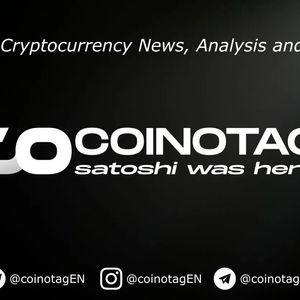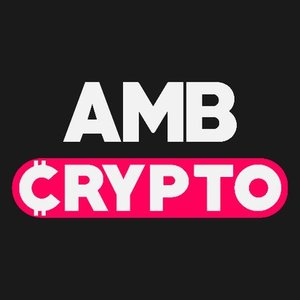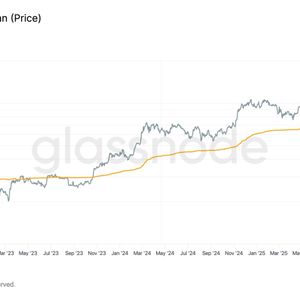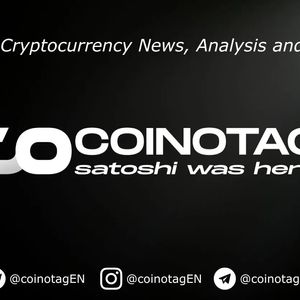2025-10-02 15:22:13
Q3 RECAP
The third quarter of 2025 brought a historic milestone: crypto officially became part of the global financial system, which impacted the further dynamic of the entire industry. In this recap, we cover the main events of the past quarter that are shaping the current landscape. The First U.S. Crypto Laws After years of uncertainty, digital assets are finally emerging from the gray zone, paving the way for broader institutional adoption. There were three key developments in the legislative sphere: the GENIUS Act, the CLARITY Act, and the Anti-CBDC Surveillance State Act. The GENIUS Act, signed into law in July, established the first comprehensive framework for payment stablecoins in the United States. For the first time, issuers had a clear set of rules to follow: reserves must be held in cash or short-term U.S. Treasuries, monthly disclosures are mandatory, and large players must undergo annual audits. Perhaps most importantly, the law placed regulatory oversight in the hands of the banking system. Insured depository institutions can issue stablecoins under the supervision of their existing regulators, while certain nonbank issuers are overseen directly by the OCC. This ended the “gray zone” that had long surrounded stablecoins and prompted banks to begin planning their own digital dollar tokens. Capital flows started moving away from lightly regulated issuers toward those capable of complying with this new, rigorous framework. Currently, we are seeing an acceleration in stablecoin supply, driven by the GENIUS Act. This increase adds more liquidity to the crypto ecosystem, fueling DeFi activity and supporting upward movements in crypto asset prices. Almost simultaneously, the House passed the Digital Asset Market Clarity Act, commonly known as the CLARITY Act. While it still needs to pass the Senate, the bill gained bipartisan support and lays out a roadmap for resolving the long-standing jurisdictional dispute between the SEC and the CFTC. Under the act, the CFTC would become the primary regulator of digital commodities such as Bitcoin and Ethereum, while the SEC would retain authority over offerings that resemble securities. For exchanges and custodians, the CLARITY Act signals a future of clearer, more predictable oversight, even as details around custody, reporting, and listing rules are still being finalized. The Anti-CBDC Surveillance State Act, passed by the House in mid-July, sent a strong political signal about the future of money itself. The bill prohibits the Federal Reserve from issuing or piloting a retail central bank digital currency, effectively ruling out a Fed-issued digital dollar in the near term. Instead, the U.S. is placing its trust in privately issued, fully backed stablecoins, the very model established by the GENIUS Act. Together, these three legislative moves mark a turning point. Stablecoins now operate under a clear federal framework, market-structure reform is moving forward, and private issuers are positioned as the backbone of the dollar’s digital future. With the gray zone behind them, cryptocurrencies are now ready for the next stage: institutional adoption and integration into the broader financial system. Global Assets Continue to Hit Record Highs The S&P 500, gold, and Bitcoin demonstrated strong performance in Q3 2025. In addition, other metals such as silver and platinum showed significant growth, reaching multi-year highs. These market dynamics suggest notable shifts are underway, though it remains difficult to predict their long-term direction. As the S&P 500 continues to set new record highs, concerns about overheating are growing, raising the risk of a potential correction. However, so far there are no clear negative signals in the macroeconomic environment that would point to a break in the prevailing upward trend. As crypto becomes more integrated into the global financial system, it can no longer be viewed as a protective instrument against an S&P 500 correction in the same way gold is. Crypto market activity is now closely tied to the performance of the S&P 500 and the broader U.S. economy. Institutional Players Take Over Bitcoin Holdings Bitcoin showed strong positive dynamics in Q3 2025. The asset continues to mature, attracting significant inflows from institutional investors and gradually becoming less volatile. So far, Bitcoin has mainly traded within the $108,000–$118,000 range, with a market capitalization of around $2.25 trillion, making its price relatively stable at the current stage. Bitcoin’s price remained relatively stable in Q3 2025 despite record demand driven by the S&P 500’s growth. This may suggest a rotation among holders, with long-term investors taking profits while new participants enter the market. Spot ETF inflows continue to provide strong support for Bitcoin’s price. Holders of Bitcoin ETFs tend to accumulate rather than sell, and so far, the charts show no significant signs of outflows. This trend could persist over the long term, as ETF investors are generally oriented toward long-term holding rather than short-term speculation. So far, Bitcoin appears to be undergoing a shift in its holder structure, with the retail share gradually giving way to institutional players such as corporations, investment funds, and possibly even, behind the scenes, state-level entities. Ethereum Q3 2025 was a breakout quarter for Ethereum. ETH finally took out its previous ATH and posted strong upside. The catalyst came from U.S. legislative moves that pushed stablecoins and DeFi further into the mainstream. Since Ethereum remains the base layer for both, it naturally became one of the biggest winners of this regulatory shift. Additionally, Ethereum has begun to gain ground against Bitcoin, rebounding from key support near 0.02 and breaking above its 365-day moving average. Historically, the ETH/BTC ratio has peaked at 0.08. If Bitcoin stabilizes around $120,000, Ethereum would need to reach roughly $9,600 to revisit that historical high in the ETH/BTC pair. Institutional inflows into the Ethereum ETF are rising, though still moderate compared to Bitcoin’s ETF. This suggests considerable room for growth if Ethereum follows the classic crypto cycle, where liquidity first flows into Bitcoin, then rotates into Ethereum, and eventually spreads to altcoins. Another key driver of Ethereum’s growth is the declining supply held on centralized exchanges, which accelerated sharply this quarter. This trend points to sustained strong demand for Ethereum. L1 & L2 performance Solana leads in active addresses Solana ’s TVL is up over 30%, now standing at $30.5B. DEX volume hit $365B, an 18% increase compared to Q2, with volume holding steady around $120B per month. Both chain fees and revenue also grew QoQ, reaching $122M and $13.9M, respectively. Solana lost its lead in monthly active addresses for the first time since August 2024, surpassed by BNB Chain and Near. Memecoins remained the main activity driver on Solana. LetsBonk.fun launchpad dominated the market in July, pushing the usual leader, Pump.fun , far behind. However, Pump fun later regained dominance and now holds nearly 90% of the market share. One notable launch in August was Jupiter Lend , a lending protocol powered by Fluid . The project attracted over $1B in TVL within just a few days and has become the #2 lending protocol on Solana. In July, Solana rolled out a major network upgrade that increased block capacity by 20%, raising it to 60 million compute units per block. This boosted throughput and opened the door for improved scalability. Another significant upgrade, Alpenglow, is on the horizon – aiming to reduce transaction finality from around 13 seconds to just 100-150 millisecondsBNB Chain activity accelerates It’s been a strong quarter for BNB Chain . Active addresses grew by 57% QoQ, reaching a new ATH of 47.3M. Transaction count also increased – from 892M in Q2 to 1.22B in Q3. In September, chain revenue hit $2.2M, the highest level since March. DEX volume for Q3 reached $225B, marking the highest since Q4 2021. Most metrics saw accelerated growth in September, following the launch of Aster , a new perp DEX on BNB Chain. It drew in a wave of traders and kicked off a broader perp season across crypto. As a result, perps volume surged by 55% in Q3, hitting $36B. On the development front, BNB Chain validators are proposing to halve gas fees and increase block speed to boost trading activity, and ensure long-term growth, all while maintaining a stable 0.5%+ staking APY. Avalanche sees a spike in DEX Volume and TVL September recorded the highest monthly fees for Avalanche this year – $1.47M. The network’s TVL reached $4.4B, a level not seen since summer 2022. DEX volume surged, with quarterly volume up 185% compared to Q2, hitting $37.1B in Q3 – a new ATH. The surge in activity is primarily driven by growing institutional interest and a wave of new strategic partnerships. AVAX One, a crypto treasury company, aims to raise $550M to accumulate AVAX tokens and become the first publicly traded Avalanche-focused treasury entity. Additionally, the Avalanche Foundation is pursuing $1 billion across two separate deals to establish crypto treasury companies in the U.S. Hyperliquid slows as perp DEX competition intensifies HyperEVM more than doubled its TVL in Q3, now standing at $7.2B. Meanwhile, Hyperliquid set new all-time records with $111M in fees in August and $294M in total fees for the quarter. In September, it ranked third by revenue across the entire crypto industry. Perps volume peaked in August at $398B, but declined in September due to rising competition from other players. Recently, HLP’s fee share was reduced to 1%, with 99% of fees redirected to the Assistance Fund for HYPE buybacks. Over the past 30 days, $83M worth of HYPE has been bought back. Notably, a Hyperliquid-native stablecoin, USDH, was launched in September by Native Markets.Altcoin highlights BNB gained over 50% in Q3, hit the $1,000 milestone for the first time, and set a new ATH of $1,079. The BNB Network Company (NASDAQ: BNC), a subsidiary of CEA Industries Inc., has built a portfolio of 418,888 BNB, becoming the largest corporate BNB holder. HYPE reached a new ATH of $59.26, but later retraced to $45 as competition in the perps sector intensified. As mentioned earlier, an ongoing token buyback program continues, with $84M in buybacks recorded in September alone. Additionally, Bitwise submitted a spot ETF proposal to the SEC for Hyperliquid, aiming to provide regulated exposure to HYPE. MYX became the first perp DEX token to skyrocket, gaining over 15,000% since August. The initial pump was driven by its Binance Alpha listing and anticipation of the V2 launch, while the next wave of growth came from speculative buying pressure, drawing skepticism from market analysts. ZORA made a strong 1200% run, but later pulled back to $216M market cap. The rise was caused by integration with the Base App and a Binance Futures listing. ENA grew by over 100% in Q3, driven by the launch of StablecoinX, a publicly traded treasury company that initially raised $360M to execute a buyback and accumulation program for ENA. StablecoinX later raised another $530M, bringing its total financing to $890M – pushing Ethena's ENA treasury toward 3B tokens. ASTER soared over 1,000% following the launch of Aster DEX, which kickstarted the real perps season. The token’s market cap quickly surpassed $4B, largely thanks to CZ, who posted several tweets in support of Aster.Memecoins cool off, Pump.fun is still the king Q3 was a true rollercoaster for the memecoin trenches. July marked the first time Pump.fun was truly dethroned. LetsBonk.fun gained momentum and managed to capture the majority of memecoin traders, outperforming PF across all key metrics that month. However, the reign of this new king was short-lived. Pump fun reclaimed leadership in August, driven by the launch of the Full Glass Foundation, the initiation of the PUMP buyback program, the introduction of creator fees, and the relaunch of livestreams. Currently, Pump fun holds nearly 90% of the market share by volume, although overall volumes remain well below ATHs. In terms of other metrics, Pump fun generated $119M in fees in September, ranking 4th across the entire crypto space. The memecoin sector cooled off in September as user attention shifted to perp trading. As a result, on September 28, daily volumes dropped to $90M, the lowest in many months, and total daily graduates fell to just 79. DeFi is thriving: Aave sets new records, Pendle and Fluid gain momentum Aave Aave ’s TVL jumped over 70% in Q3, rising from $42B to $74B, and further strengthening its position as the leading DeFi protocol. It also crossed a major milestone of $3T in total deposits. In terms of product updates, Aave Labs launched Horizon, a new lending market where institutions and other qualified users can borrow stablecoins against real-world assets (RWAs). At launch, collateral options include assets from Circle , Superstate , and Centrifuge. Aave also became the first DeFi protocol to reach $1B TVL across six networks. Interestingly, the newly added Aave chains outpaced older competitors: Plasma is now the second-largest chain on Aave with $6.6B TVL, followed by Linea with $2.2B. Pendle With $17M in fees, Pendle recorded its best quarter ever. The protocol’s TVL soared from $5B to $13B, before correcting back to $7B alongside broader market pullbacks. The main contributors to Pendle’s TVL are sUSDe , USDe , and kHYPE . Pendle also formed key partnerships, integrating Kinetiq’s kHYPE and Maple ’s syrupUSD into its ecosystem. In August, the team launched Boros, a platform for trading tokenized yield from perpetual funding rates. It introduced Yield Units (YUs) – synthetic assets representing future yield – enabling new ways to speculate, hedge, or earn on funding rate movements. Fluid In Q3, Fluid solidified its position among the top DEXs. It became the #4 DEX by volume in September with $27B, and the #2 DEX on Ethereum. The protocol set a new ATH in quarterly fees – $22.3M, generating over $1M in revenue for three consecutive months. Fluid also expanded to Solana through a partnership with Jupiter, launching Jupiter Lend. Additionally, Fluid introduced DEX Lite, an ultra gas-efficient DEX designed specifically for correlated asset pairs. Memecoins cool off, Pump.fun is still the king Q3 was a true rollercoaster for the memecoin trenches. July marked the first time Pump.fun was truly dethroned. LetsBonk.fun gained momentum and managed to capture the majority of memecoin traders, outperforming PF across all key metrics that month. However, the reign of this new king was short-lived. Pump fun reclaimed leadership in August, driven by the launch of the Full Glass Foundation, the initiation of the PUMP buyback program, the introduction of creator fees, and the relaunch of livestreams. Currently, Pump fun holds nearly 90% of the market share by volume, although overall volumes remain well below ATHs. In terms of other metrics, Pump fun generated $119M in fees in September, ranking 4th across the entire crypto space. The memecoin sector cooled off in September as user attention shifted to perp trading. As a result, on September 28, daily volumes dropped to $90M, the lowest in many months, and total daily graduates fell to just 79. DeFi is thriving: Aave sets new records, Pendle and Fluid gain momentum Aave Aave ’s TVL jumped over 70% in Q3, rising from $42B to $74B, and further strengthening its position as the leading DeFi protocol. It also crossed a major milestone of $3T in total deposits. In terms of product updates, Aave Labs launched Horizon, a new lending market where institutions and other qualified users can borrow stablecoins against real-world assets (RWAs). At launch, collateral options include assets from Circle , Superstate , and Centrifuge. Aave also became the first DeFi protocol to reach $1B TVL across six networks. Interestingly, the newly added Aave chains outpaced older competitors: Plasma is now the second-largest chain on Aave with $6.6B TVL, followed by Linea with $2.2B. Pendle With $17M in fees, Pendle recorded its best quarter ever. The protocol’s TVL soared from $5B to $13B, before correcting back to $7B alongside broader market pullbacks. The main contributors to Pendle’s TVL are sUSDe , USDe , and kHYPE . Pendle also formed key partnerships, integrating Kinetiq’s kHYPE and Maple ’s syrupUSD into its ecosystem. In August, the team launched Boros, a platform for trading tokenized yield from perpetual funding rates. It introduced Yield Units (YUs) – synthetic assets representing future yield – enabling new ways to speculate, hedge, or earn on funding rate movements. Fluid In Q3, Fluid solidified its position among the top DEXs. It became the #4 DEX by volume in September with $27B, and the #2 DEX on Ethereum. The protocol set a new ATH in quarterly fees – $22.3M, generating over $1M in revenue for three consecutive months. Fluid also expanded to Solana through a partnership with Jupiter, launching Jupiter Lend. Additionally, Fluid introduced DEX Lite, an ultra gas-efficient DEX designed specifically for correlated asset pairs. . Perp DEX Wars: Hyperliquid, Aster, Lighter The recent perp DEX wars have radically reshaped the competitive landscape in just a few weeks. The MYX token pump in August turned out to be the first sign of the upcoming perp season. The real rally began with the relaunch of Aster, a perp DEX on BNB Chain directly tied to the Binance ecosystem and publicly recognized by CZ. It quickly captured market attention as the token price surged over 1,000% in a few days, pushing its market cap close to $4B. Aster’s daily perp volume grew from $300M in August to a peak of $85B on September 28, while monthly volume reached $420B. In September, Aster generated $134M in fees, ranking third among all crypto projects, behind only Tether and Circle. Other protocols like Lighter , edgeX, and Avantis are also aggressively competing for dominance and trading volume, putting pressure on the sector leader – Hyperliquid . Hyperliquid saw a 30% drop in monthly perp volume in September – $282B vs $398B in August. Monthly fees also declined from $114M to $87M. Meanwhile, the HYPE token has dropped over 30% since its recent ATH. Still, despite the decline in volume, Hyperliquid remains far ahead of competitors in open interest, currently holding over 1.5x the combined OI of the next 10 protocols. This reflects genuine community belief and demand, as the platform’s volume comes organically – not driven by any points incentives. There are also ongoing community discussions questioning the sustainability of some DEXs’ rapid volume growth, with concerns that it may be artificially inflated. Stablecoins: USDT & USDC, USDe supply growth, XLP launch The total stablecoin market cap is nearing $300 billion. Net inflows soared from $10.8B in Q2 to $45.6B in Q3, marking a 300%+ increase. USDT remains the sector leader with a 58.7% market share, followed by USDC at 24.7%. In third place is Ethena’s USDe , holding 4.8% of the market and showing impressive growth, as its supply rose from $5.3B to $14.7B in Q3. Ethereum remains the dominant chain for stablecoins, with $171B in circulating supply. It’s followed by Tron ($76.7B), Solana ($12.8B), and Arbitrum ($9.4B). One of the most anticipated launches this quarter was Plasma , a high-performance L1 blockchain purpose-built for stablecoins. It offers instant, fee-free payments with institutional-grade security. Designed for global payment flows, Plasma launched with over 100+ DeFi integrations on Day 1. As of October 1, its DeFi TVL stands at $13.6B, ranking 4th among all chains, while its stablecoin market cap is $5.8B, ranking 6th. Reflecting high demand, the XPL token surged over 70% in the two days following its launch, but has since pulled back close to its TGE price. Despite the strong growth in the overall market cap, there are signs of a potential cool-off. Stablecoin transfer volume fell from $3.5T in August to $3.2T in September, and monthly active addresses dropped by 23%, down to 26 million. Prediction markets: Polymarket vs Kalshi rivalry Prediction markets have emerged as one of the strongest narratives in Q3, with two clear leaders – Polymarket and Kalshi – battling for dominance. Although Polymarket had held the lead for many months, the landscape is shifting. In September, Kalshi surpassed Polymarket by notional volume: $2.86B vs $1.44B. Currently, Kalshi holds a 57% market share compared to Polymarket’s 40% As of October 1, the following statistics reflect the state of active markets on Polymarket and Kalshi: Other players, such as Limitless , Myriad , and others, collectively hold around 3% of the market share. Notably, HIP‑4 (Hyperliquid Improvement Proposal 4) was introduced on September 16, aiming to add “Event Futures”, binary/prediction-style markets, to Hyperliquid’s perpetual trading platform. Unlike traditional perps, Event Futures don’t rely on continuous oracles or funding rates; their prices are driven entirely by trading activity. Interestingly, prediction markets are now crossing over into mainstream culture. A recent South Park episode featured both Polymarket and Kalshi, with characters betting on everything from school lunches to geopolitical events. Notably, the exposure sparked real activity – Kalshi attracted ~$1.5M in volume tied to the episode, while Polymarket saw a more modest response. The bottom line Q3 2025 marked a historic turning point for crypto, with the U.S. passing its first federal crypto laws and the market responding with record-breaking growth across stablecoins, DeFi, prediction markets, and onchain trading. Institutional adoption accelerated, fueled by regulatory clarity, ETF inflows, and the rise of new infrastructure. While some sectors showed signs of cooling, the overall trajectory remains upward – crypto is no longer on the fringe, but firmly integrated into the global financial system. Disclaimer: This article is provided for informational purposes only. It is not offered or intended to be used as legal, tax, investment, financial, or other advice.













